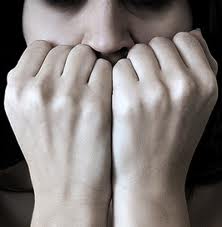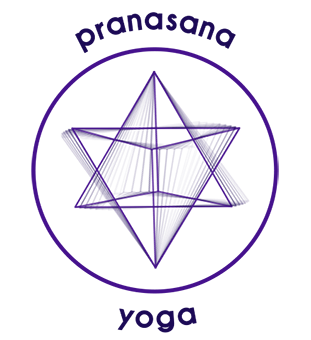
Anxiety is a conditioned reaction to stress placed on the nervous system and mind, in order to act in a given situation. When dinosaurs roared, cave-folk instinctively ran in fear. Eons later, this imprint remains – “Whose dinner am I and, where’s mine coming from?” Although we appear to have evolved we are still concerned with letting go of what hasn’t yet got a hold of us, or, getting hold of ideas or things that we then have great trouble in letting go of!
Anxiety can range from mild to severely uncomfortable, with a root or cause that may be extremely difficult to pinpoint. Reactions and symptoms are based upon perceptions; thoughts and beliefs belonging to past or future, rather than momentary reality. Both the body and mind stress to unhealthy levels, leaving residue in a diversity of conditions known as Anxiety Disorders.
Generalised Anxiety Disorder (GAD) is on the increase. Following the technology revolution of the last thirty years, coupled with consumerism, attachment to the material increases and knowledge of a higher taste declines; people fret about daily affairs, worrying deeply about job surety, family, investments, lack of a pension or almost anything else one can think of. Deep traumas of past; arguments, divorce, abuse, internal, local or global war – all sow karmic seeds. Eventually tension ‘breaks the camel’s back’, leading to potentially debilitating and even life threatening conditions.
As the angst threads through our wiring, it corrupts all of our thinking progressively; chemically imbalanced brains affect our behaviour and performance. Minds and bodies become sick and all relationships suffer.
The causes of common anxiety are genetic as well as environmental. People turn to recreational drugs, eating, shopping, scandal and promiscuous behaviour for assistance. They compound the situation and mask an enlightened solution, which appears more complex to a clouded mind.
With increasing social pressure, facilitated by the Hyper-Net, more youngsters find themselves dancing the bottom few rungs of a greasy social ladder. They chase a mirage created by uncaring and greedy individuals, whose desire feeds the adrenalin of those aspiring to ‘success’.
Other Anxiety disorders include Obsessive Compulsive Disorder, Post Traumatic Stress and Social Anxiety Disorder, all of which are frequently treated (as is GAD), with medication and/or psychotherapy. Along with this, other health issues such as depression or high blood pressure are treated as well. There are no guarantees of long term cures and this is coupled with increasing dosage requirements, reduced effectiveness, potential side effects, addiction, withdrawal and high costs. This all suggests there may be a better and more enjoyable route.
Apart from these methods, good GP’s still recommend exercise, diet, sleep and loving support as the base line for treatment. That sounds like yoga to me.
Symptoms
There are a broad range of symptoms which all fall under the category of ‘clenched within the grip of escape or avoidance’; an overtaxed sympathetic nervous system revs constantly, leaving a multitude of symptoms, often long after the ‘trigger’ has disappeared. The mind may receive a barrage of inappropriate and unwanted thoughts, which take on their own life. Compulsions and rituals develop, followed by confusion and loss of power, along with physical signs which include a list so long one could feel anxious just reading it; palpitations, chest pains, breathing difficulty, head ache, lethargy, irritation, nausea, general panic, asthma, skin problems, IBS, depression, lack of confidence and phobias of almost anything imaginable, are but a few.
Simply imagining one’s anxiety can activate it, by triggering the soft wires of the brain’s neuro-net. Fearing colleagues might find out you are being treated for anxiety is another fire-starter. As well as avoidance, lack of positive focus, repeated and exaggerated behaviour typify the psychological profile of many anxious victims.
How Yoga Helps
I believe we exist in a loving universe, yet if this is so, conditions such as
Agoraphobia, Post Traumatic Stress and Social Anxiety, don’t do much in suggesting this is true. Something has gone amiss in our education and social systems.
Yoga exists as a mature and refined option in alleviating anxiety by severing its root, rather than killing weeds with toxic suppressants alone. By this I mean, if you are on medication, continue prescribed dosage, along with regular yoga practice.
To treat anxiety, yoga isolates its cause. It makes one aware gradually, of the factors and their seeds which dictate how one feels.
Yoga practice commences with Self-Love, incorporating cognitive restructuring; students become aware of and face stresses and strains in the body and mind in a ‘controlled environment’. This is very empowering. With persistence, one sees more objectively, noticing the subtle play of tension and relaxation throughout. We let go of the unnecessary and return to simplicity.
The use of breath is our vital medium to regulate both mind and body. Exhalation activates relaxation response, inhalation the ‘get up and go’ nerves. Yoga practice instils growing awareness of the balance of forces; taking life in, letting it flow out again. Breath is life and so knows the key to permanent change.
Postures lengthen and strengthen all bodily muscles, tendons and ligaments, releasing and soothing the system progressively. Practice’s compassionate light reveals fear’s root, allowing release and transformation in to a ‘positive’ current, if this be our choice. When fear locks one’s being and panic seizes the breath, breath-awareness trains the yogin how to counter and rebalance.
Most anxiety sufferers either Shallow Breath or Hyperventilate (accelerated and/or excessively deep breathing); either of which can lead to alarm mode when left unchecked.
Yogic philosophy and psychology highlight how to rebalance, as information seeps in from the divine side. Equilibrium restores through constant willingness to listen effortlessly and let go. Breath and mind restore nerves and feelings to joy and calm. This shifting perspective allows individuals to re-view the status quo from an enlightened state of alchemised enquiry. All emotions, feelings and actions are observed without judgment, reducing tension as the undercurrent of healing intent leads the flow; filling the shadow with light.
Exercises
Loosening exercises – move your joints freely, at whatever pace feels right. Circle, twist and bend; neck, shoulders, elbows, writs, hips, knees and ankles – opening ‘gates’ for the energy to flow more easily.
Massage your forehead and skull, pressing and holding indentations gently for about one minute, especially where there is sensitivity.
Hold the skull front and back. Feel the hands warmth and breathe through from one hand to the other and back.
Breathe in to your belly, legs and ground, to bring surplus energy down.
Massage the wrists for about a minute and your feet the same. Rub the ears a couple of times a day, for a couple of minutes, especially before sleep.
Drink Camomile tea or similar herbal remedies instead of caffeinated and fizzy drinks.
Take hot showers or baths, use essential oils and give/receive massage.
Share your worries with friends and cuddle your pet.
Next month – Anxiety Part 2 – Postures, breathing and meditation techniques to further help with Anxiety Disorders.
Copyright Matt Gluck September 2010
